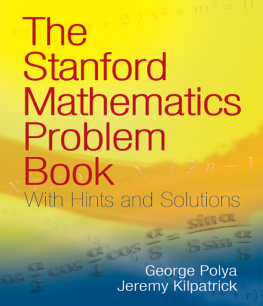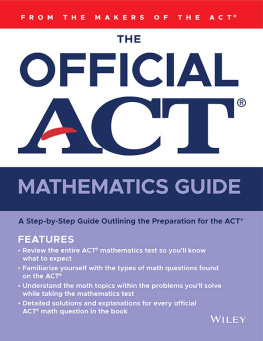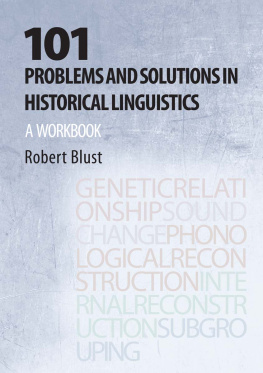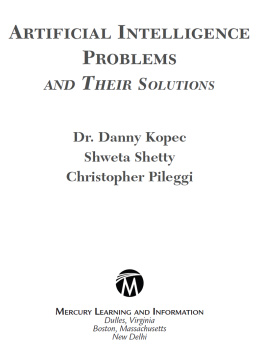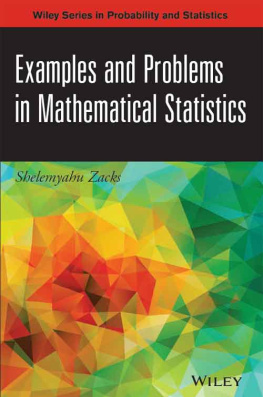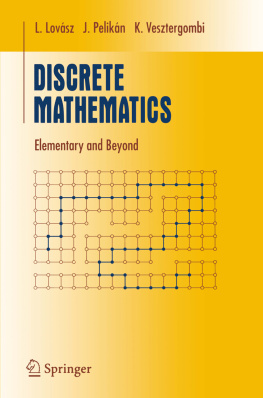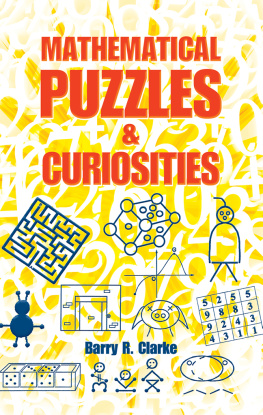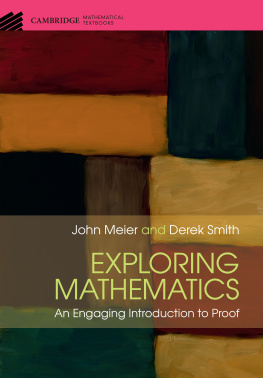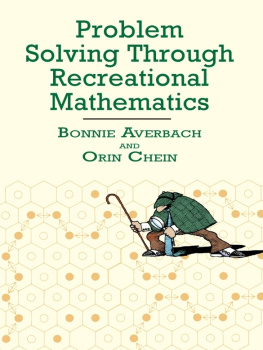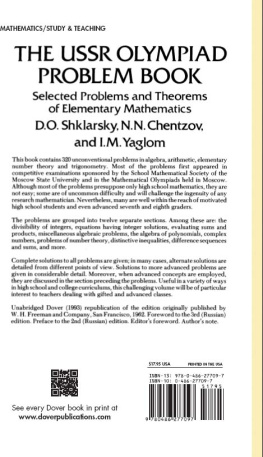The Stanford Mathematics
Problem Book
With Hints and Solutions
George Polya
Jeremy Kilpatrick
DOVER PUBLICATIONS, INC.,
Mineola, New York
Contents
Part One
INTRODUCTION
For twenty years, from 1946 to 1965, the Department of Mathematics at Stanford University conducted a competitive examination for high school seniors. The immediate and principal purpose of the examination was to identify, among each year's high school graduates, singularly capable students and attract them to Stanford. The broader purpose was to stimulate interest in mathematics among high school students and teachers generally, as well as the public.
The examination was modeled on the Etvs Competition [see 23], which was organized in Hungary in 1894 and which, in turn, appears to have been suggested by similar competitions in England and France. Gabor Szeg, chairman of the Stanford Department of Mathematics in 1946 and winner of the Etvs Competition in 1912, initiated the Stanford examination.
The examination was established in the belief that an early manifestation of mathematical ability is a definite indication of exceptional intelligence and suitability for intellectual leadership in any field of endeavor. Furthermore, mathematical ability can be tested at a comparatively early age because it is manifested not so much by the amount of accumulated knowledge as by the originality of mind displayed in the game of grappling with difficult though elementary problems [2, p. 406].
As Buck [1] noted some years ago in reviewing mathematical competitions, an examination can be designed, broadly speaking, to test either achievement or aptitude. The Stanford University Competitive Examination in Mathematics was of the latter type. It emphasized
originality and insight rather than routine competence.... A typical question might call for specific knowledge within the reach of those being tested, but would call for the employment of this in unusual ways requiring a high degree of ingenuity. The question may in fact introduce certain concepts which are quite unfamiliar to the student. In short, the winning student is asked to demonstrate research ability [1, pp. 204205].
The first Stanford examination, in 1946, was administered in 60 California high schools to 322 participants. The winner was awarded a one-year scholarship by Stanford University; honorable mention and a mathematics book were given to three other participants. In 1953, the examination was extended beyond California to include Arizona, Oregon, and Washington; the number of scholarships was increased to two; and the number of honorable mention awards and books was increased to ten or so. From 1958 to 1962, the examination was co-sponsored by Sylvania Electric Products, Inc. The last examination, in 1965, was administered to about 1200 participants in 151 centers in California, Arizona, Idaho, Montana, Nevada, Oregon, and Washington. Cash prizes of $500, $250, and $250 were awarded to the three winners; honorable mention and a mathematics book went to eighteen participants. The examination was discontinued after 1965 mainly because the Stanford Department of Mathematics turned its interest to more graduate teaching.
Announcements of the examination were sent each year to all public and private high schools in each state where the examination was to be administered. Larger schools were designated as centers; students from other schools were free to arrange to take the examination in a convenient location.
The examination was administered by teachers and school personnel on a Saturday afternoon in March or April. The participants were given three hours to attempt three to five problems. The following instructions were, given:
No books or notebooks may be used. You may not be able to do all the problems in three hours, but whatever you do should be carefully thought out. Scratch paper may be used. Either pen or pencil may be used. No questions concerning the test should be asked of the person in charge.
Good presentation counts!
It should be clear, concise, complete.
The papers were read in a two-stage process: First, they were read by teams of graduate students in the Department of Mathematics, including, as was sometimes possible, graduate students who were experienced high school teachers. Each team of two students was assigned a problem to read in as many papers as they could handle. Papers containing either a stated minimum of good solutions (for example, one and a half or two out of four) or some special feature were forwarded to the second stage. In the second stage, each paper that survived the first screening was read by at least one faculty member of the Department. The papers considered most likely to be winners were read by all participating faculty members.
To make the selection of winners easier, the problems were devised so that only a very few participants would be able to solve all of them. On the other hand, to avoid too much frustration, the first problem was usually more accessible than the others, especially in the later years, so that many participants were able to solve it.
Although the mathematical content of the problems did not go beyond that of the high school curriculum, the problems were of types seldom found in textbooks. The purpose of such problems was not only to test the students originality, but also to enrich the high school mathematics program by suggesting some new directions for students and teachers work. The types of problems included: (1) guess and prove, in which one first guesses and then proves a mathematical fact; (2) test consequences, in which one tests the consequences of a general statement; (3) you may guess wrong, in which a highly plausible guess is incorrect; (4) small scale theory, in which a sequence of subproblems illustrates theory construction; and (5) red herring, in which an obvious relationship among the data turns out to be irrelevant to the solution [see 9; 19, pp. 160161, ex. 1; 21, p. 139, ex. 14.23].
The problems were of the sort used as illustrations in How to Solve It[17], in the two volumes of Mathematics and Plausible Reasoning [18, 19], and in the two volumes of Mathematical Discovery [20, 21]. In fact, many of the problems appear, usually with solutions, in one or another of those books.
Most of the problems have also appeared in journals. The problems and the list of winners for each examination from 1946 to 1953 (except 1952) were published in the American Mathematical Monthly [2, 3, 4, 5, 6, 7, 8]; and the complete set of problems, together with an Introduction, somewhat adapted here, appears in the JuneJuly 1973 issue of that monthly [24]. Articles containing problems, solutions, comments, and lists of winners for 1953 to 1961 (except 1959) were published in the California Mathematics Council Bulletin [9, 10, 11, 12, 13, 14, 15, 16].
The complete set of problems has never before, however, been published together with hints and solutions for all problems. Material copyrighted previously is reprinted here by permission.
designates problem 1 in the 1946 examination.
contains a hint for each problem; the hints are numbered to correspond with the problems. The hints are similar to those in Part IV of How to Solve It [17], and most of them use one or more of the heuristic questions and suggestions treated in that book.
contains a solution for each problem (sometimes two solutions); the numbering is as before. Solutions outline the procedures used, but some details are, of course, left to the reader. Some solutions end with an indication of connections to other problems or generalizations.

